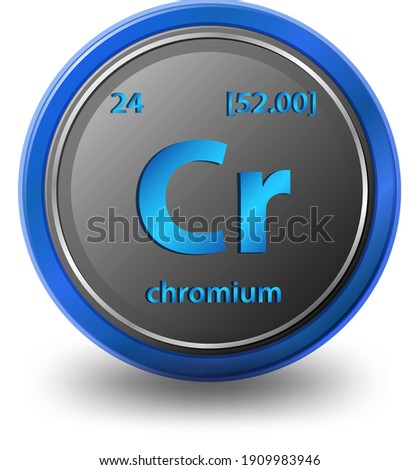In the modern periodic table, the elements are listed in order of increasing atomic number. The atomic number is the number of protons in the nucleus of an atom. The number of protons define the identity of an element (i.e., an element with 6 protons is a carbon atom, no matter how many neutrons may be present). The number of protons determines how many electrons surround the nucleus, and it is the arrangement of these electrons that determines most of the chemical behavior of an element.
- An atom of aluminum with a mass number of 24 and an atomic number of 13 has a total of 11 neutrons. An atom of phosphorous with a mass number of 31 and an atomic number of 15 has a total of 16 neutrons. An atom of potassium with a mass number of 39 and an atomic number of 19 has a total of 20 neutrons.
- Related WordsSynonymsLegend: Switch to new thesaurus Noun 1. Atomic number 23 - a soft silvery white toxic metallic element used in steel alloys; it occurs in several complex minerals including carnotite and vanadinite vanadium, V metal, metallic element - any of several chemical elements that are usually shiny solids that conduct heat or electricity and can be formed into sheets etc.
In a periodic table arranged in order of increasing atomic number, elements having similar chemical properties naturally line up in the same column (group). For instance, all of the elements in Group 1A are relatively soft metals, react violently with water, and form 1+ charges; all of the elements in Group 8A are unreactive, monatomic gases at room temperature, etc. In other words, there is a periodic repetition of the properties of the chemical elements with increasing mass.
Atomic Number 24 Belongs To Which Block
Atomic Number – Protons, Electrons and Neutrons in Chromium. Chromium is a chemical element with atomic number 24 which means there are 24 protons in its nucleus.Total number of protons in the nucleus is called the atomic number of the atom and is given the symbol Z.

In the original periodic table published by Dimitri Mendeleev in 1869, the elements were arranged according to increasing atomic mass— at that time, the nucleus had not yet been discovered, and there was no understanding at all of the interior structure of the atom, so atomic mass was the only guide to use. Once the structure of the nucleus was understood, it became clear that it was the atomic number that governed the properties of the elements.
| Chromium is used extensively in automobile trim as chromium metal because of its shiny finish and corrosion resistance. |
Chromium
| Atomic Number: | 24 | Atomic Radius: | 189 pm (Van der Waals) |
| Atomic Symbol: | Cr | Melting Point: | 1907 °C |
| Atomic Weight: | 52.00 | Boiling Point: | 2671 °C |
| Electron Configuration: | [Ar]3d54s1 | Oxidation States: | 6, 5, 4, 3, 2, 1, −1, −2, −4 (depending on the oxidation state, an acidic, basic, or amphoteric oxide) |
History
Periodic Table Atomic Number 24
From the Greek word chroma, color. Chromium is a steel-gray, lustrous, hard metal that takes a high polish. Discovered in 1797 by the Frenchman Louis Nicolas Vauquelin.
Sources
The principal ore is chromite, which is found in Zimbabwe, Russia, New Zealand, Turkey, Iran, Albania, Finland, Democratic Republic of Madagascar, and the Phillippines. The metal is usually produced by reducing the oxide with aluminum.
Uses
Chromium is used to harden steel, manufacture stainless steel, and form many useful alloys. It is mostly used in plating to produce a hard, beautiful surface and to prevent corrosion. Chromium gives glass an emerald green color and is widely used as a catalyst.
Atomic Number 24
The refractory industry uses chromite for forming bricks and shapes, as it has a high melting point, moderate thermal expansion, and stability of crystalline structure.
Compounds

All compounds of chromium are colored. The most important chromates are those of sodium and potassium, the dichromates, and the potassium and ammonium chrome alums. The dichromates are used as oxidizing agents in quantitative analysis, also in tanning leather.
See Full List On En.wikipedia.org

Other compounds are of industrial value; lead chromate is chrome yellow, a valued pigment. Chromium compounds are used in the textile industry as mordants, and by the aircraft and other industries for anodizing aluminum.
Handling
Atomic Number Chart
Chromium compounds are toxic and should be handled with proper safeguards.
